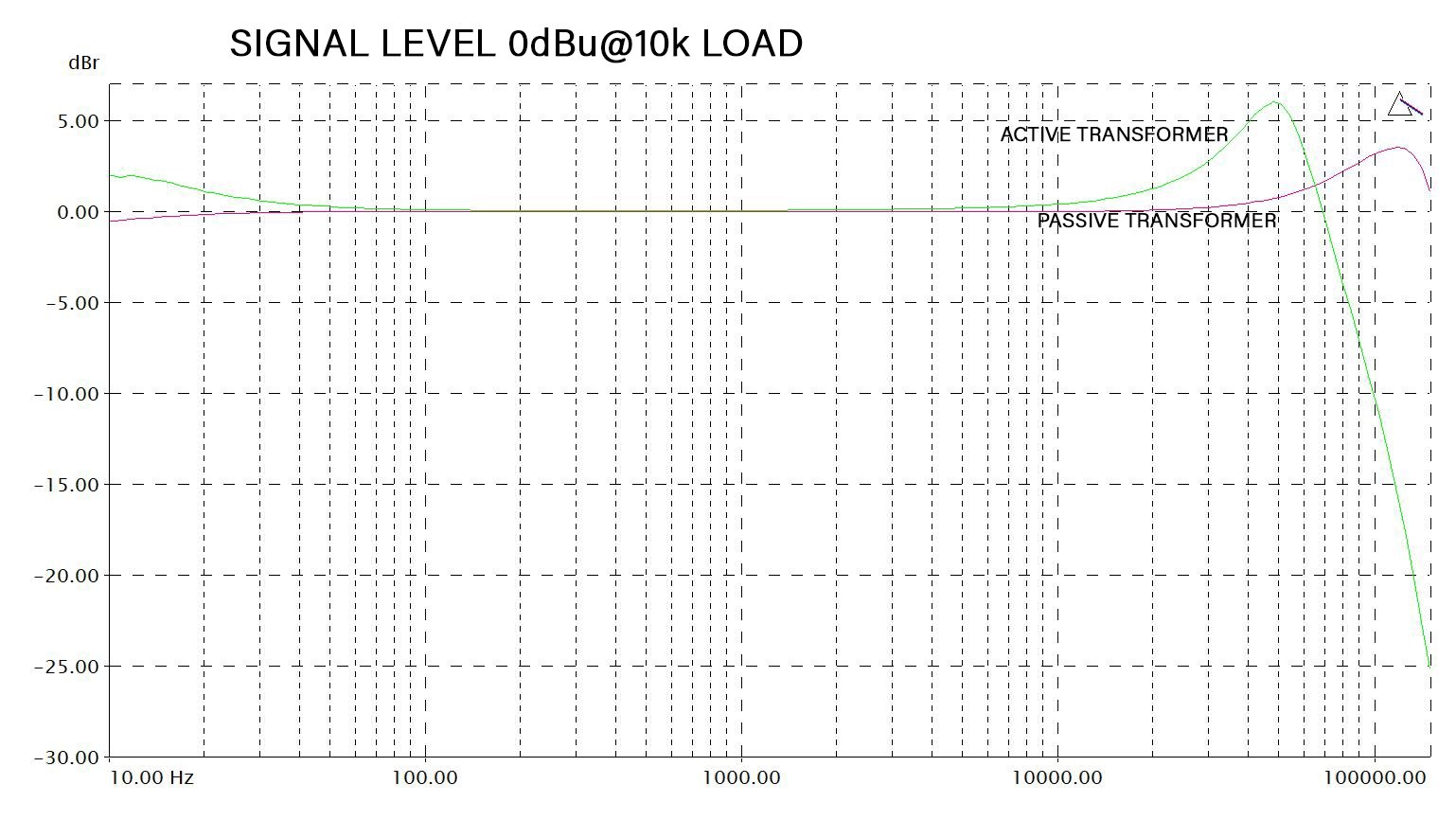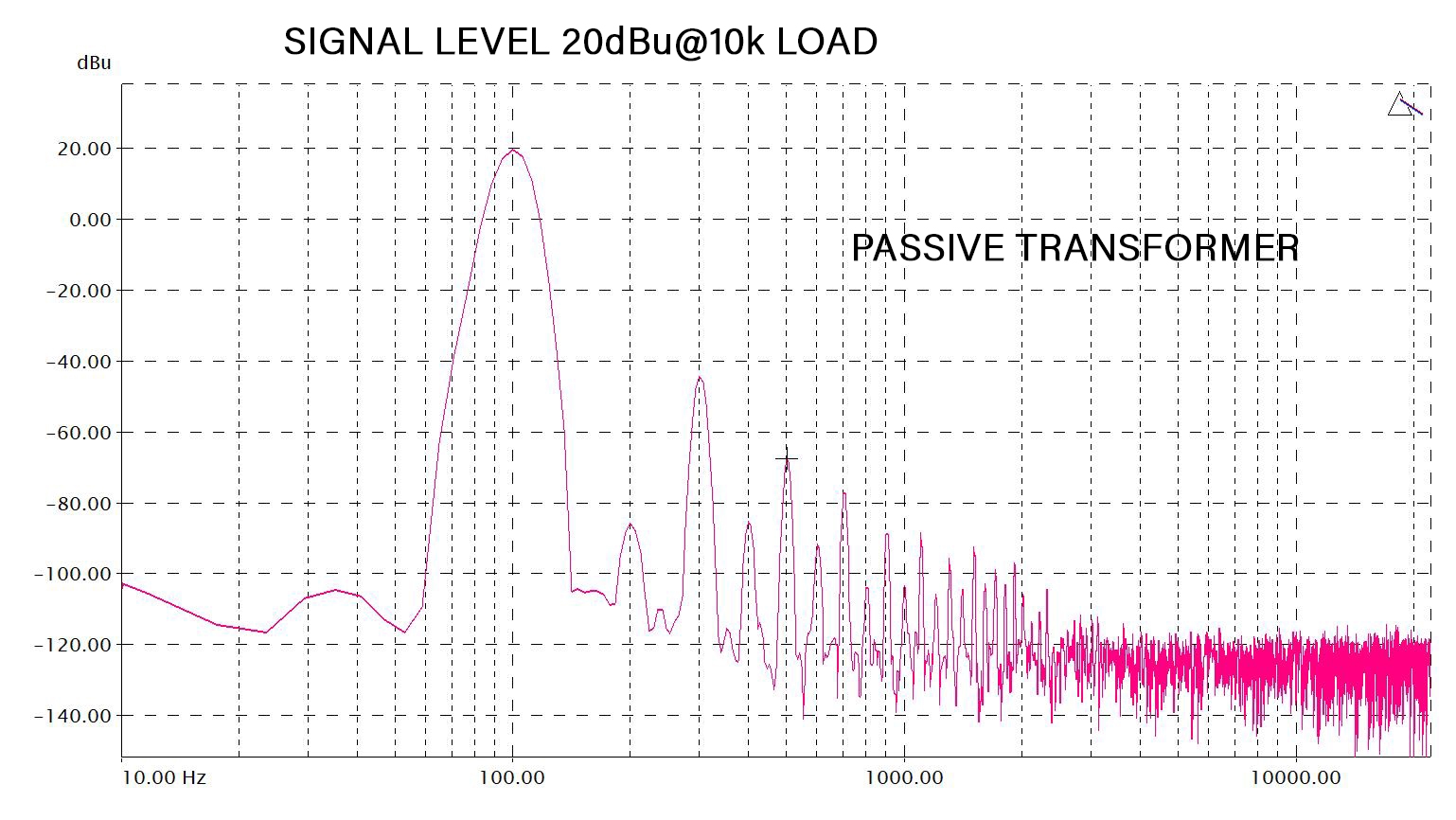HRK Active Transformer

Audio Transformers
Audio transformers are widely used in professional studio equipment for decades. At the beginning of the audio electronics, transformers were used to match the valve amplifier and the speaker, generate the balanced signal, amplify the signal from a microphone, match the source and the load, and for many other applications.
With the development of semiconductor components and integrated solid-state technology, new circuits were designed to replace the transformers providing better performance, cost, and space savings. Despite that, transformers are still used in many studio devices because they produce a subjectively pleasant sound.
It should be pointed out that transformers are, in fact, quite primitive electronic components burdened with many flows and problems. Transformers are susceptible to electromagnetic interferences, and the frequency response depends on load and source impedance, negatively influencing the overall performance of analog studio equipment.
There are ways to overcome those issues, usually by generating higher manufacturing costs and the space usage required to install a larger transformer.
Why do we like audio transformers?
The answer is simple. Because transformers sound good. Complex processes of saturating the transformer core, parasitic components present in the transformer, the resonances, and even the type of material that the core is made of generate the cocktail of harmonics perceived by the human ear as pleasant. In modern recording applications, transformers are overloaded on purpose to generate more harmonics. Most often, audio engineers are not aware that the saturated transformer is not working properly, cutting off the lowest and highest frequencies, or reducing the output signal level.
Is there a way to get all the benefits of the transformer while removing all the problems?
Yes! The solution is the HRK Active Transformer which delivers harmonics content and tone as the classic passive transformer but solves all the problems. In the paragraph below, we present the common issues caused by the passive transformers and the solutions delivered by the HRK Active Transformer design.
The Active Transformer design is completely analogue. No DSP processing, no tricks, just understanding and using the laws of physics!
Why we are using the Active Transformers in the HRK products?
Although many studio engineers believe that the problems associated with the passive transformers could be ignored, those problems are real and have an impact on the quality of the recordings. Many myths and stories haunt the internet. Such that transformer-based studio gear should be over-driven with the high level signal to achieve a “warm tone” and harmonics. Sure, it is possible, but there is a penalty for using this “technique”.
Some believe that transformers deliver “air”, true, but not always. It depends on load and signal level. And finally many expect magic results from transformers and when they don’t get results, they are disappointed.
First of all, transformers in the vintage pro-audio equipment were never meant to be used as some of the modern engineers are trying to use them. Transformers were used in audio equipment because nothing else was available at that time, to perform a required task as a part of the circuitry. Using equipment with a transformer does not guarantee phenomenal results. Vintage studio gear does not sound amazing only because of the transformers. Other active and passive components play a significant role as well.
We have encountered numerous problems with HRK products based on passive transformers. Mainly because we have assumed that engineers which use our products are educated in the basics of audio engineering in a sufficient way to know how to properly use the studio equipment with the audio transformers. Unfortunately, the situation is completely the opposite. The majority of music producers and artists nowadays start the music production adventure from the pure DAW domain and use the plugins. When they start to use studio hardware they translate bad habits to the real world governed by the hard laws of physics. Plugins can do almost anything. Hardware has to comply with the universe. Hence a hard clash with the reality, and a lot of disappointment. Our attempts to help and explain quite often were futile.
This is why we have developed the Active Transformer, which delivers the performance that most users expect while being immune to many of the problems associated with the passive transformers, and it is also resistant to bad treatment by the less experienced users.
Low-End cut-off frequency vs. the input signal level.
Depending on the signal level and the output impedance of the circuitry which drives the transformer, transformers can introduce the low-end roll-off. In general, if the signal level is higher, the LF roll-off is more pronounced, which is caused by the saturation of the transformer core. This might cause a problem for the low-end rich music content. If you are trying to get a “fat sound” on the kick drum by saturating the transformer output stage of the mic preamp, you may end up with less low-end content instead…and possibly degraded overall sound.
The plots show the low-end roll-off of the medium-sized output transformer at 3 different drive signal levels. The plots also show how the HRK Active Transformer performs under the same conditions. The source impedance is 50R, and the load impedance is 10k, which is a typical input impedance of a line input on the typical audio interface.
At the 0dBu (0.775V RMS) signal level, the low-end roll-off of the passive transformer is only -0.5dB@10Hz, which is an almost perfect result. The Active Transformer, however, boosts the 10Hz up to 2.2dB. The frequency response of the Active Transformer can be set to be completely flat for LF and HF if necessary. Presented frequency response was set to compensate losses that may happen at the input stages of the following audio devices. Each input stage is a high-pass filter that cuts off a bit of the low-end response. 1.5dB boost for the 22kHz is the “air” effect desired by modern audio engineers and, in addition, compensates for the HF losses which may occur in the signal cables.
At the +10dBu, the LF roll-off is more visible. -1dB loss at 10Hz is still acceptable. The performance of the Active Transfomer has not changed.
At +20dBu, we can see the sharp cut-off of LF. The -3dB@20Hz may cause problems in some applications. The performance of the Active Transformer did not change in any significant way.
The output level and the HF response vs. the load impedance.
The HF resonance of the transformer is responsible for the “Air” effect. The load connected to the transformer’s output has a significant influence on the transformer output level and the HF response. If you connect too many audio devices in parallel to the transformer output, the frequency response and the sound will change.
At the 10k load, the passive transformer passes the signal up to 200kHz with a characteristic resonance at 150kHz. This resonance is responsible for the “air” effect. The Active Transformer by design introduces the resonance at around 50kHz to emphasize the “air” effect further.
The resonance of the Active Transformer can be set to any desired frequency or can be removed completely, making the HF response flat.
At 600R load, we can see that the passive transformer is performing much worse. The overall signal level is reduced by -1.5dB, and the HF response is reduced by nearly -3dB@20kHz. The LF roll-off is also apparent. The Active Transformer performs at 600R load with no issues.
Harmonics content – passive transformer vs. Active Transformer
The harmonics content is responsible for the sound of the transformer, sometimes described as “fat” or “dark”. For the test purposes, the passive and active transformers were driven with the 100Hz signal at +20dBu with the 10k load to better show the harmonics spread.
The plot shows a clear dominance of the odd harmonics starting from 3rd. We can see a fairly low level of 2nd and 4th harmonics. This suggests that the sound of a tested passive transformer may not be so warm or fat…
Conclusions.
The Active Transformer is a valid alternative to the classic passive transformers. The Active Transformer design is immune to common problems of the passive transformers. It delivers better performance under various conditions and allows to model the parameters to meet specific design goals.
HRK Active Transformer basic technical spec:
- Output: Balanced
- Input: Balanced or unbalanced
- Max Output Headroom: +25dBu@0.1%THD
- Max Input level: +20dBu
- Output Impedance: Less than 50R
- Minimum Load: 400R
- Power consumption: up to 20mA
- Typical size: 30x30x30mm
If you are interested in more technical details or in licensing the HRK Active Transformer design, don’t hesitate to get in touch with us here ->
© 2024 HRK Shop
User Information. This page uses cookies files to process the orders and deliver a better user experience.












